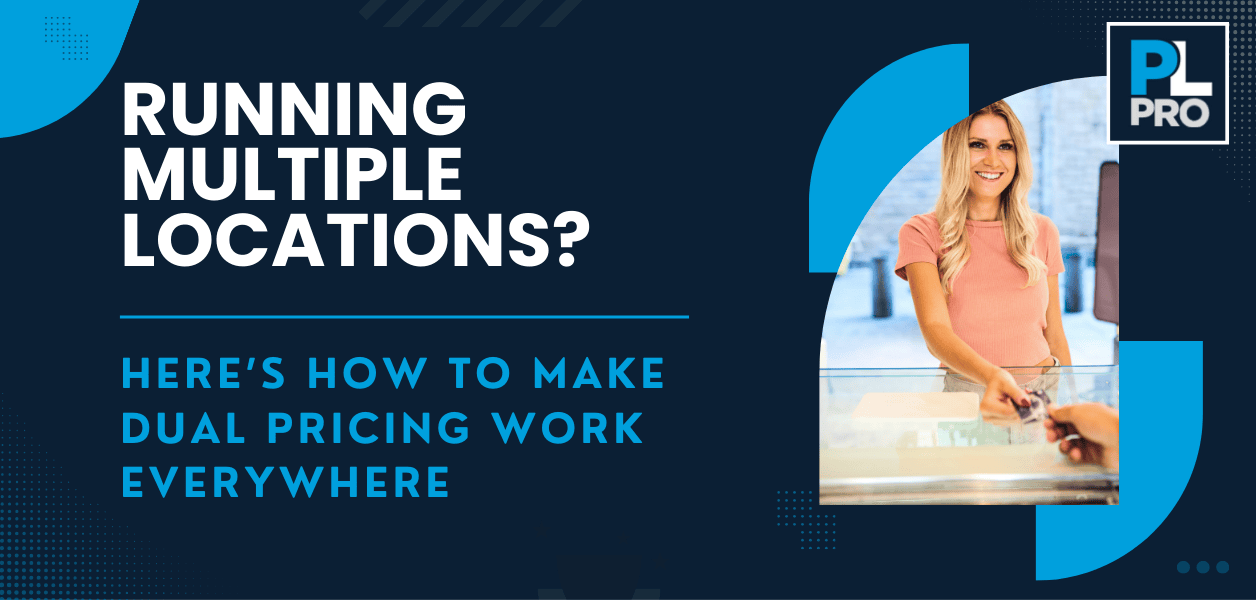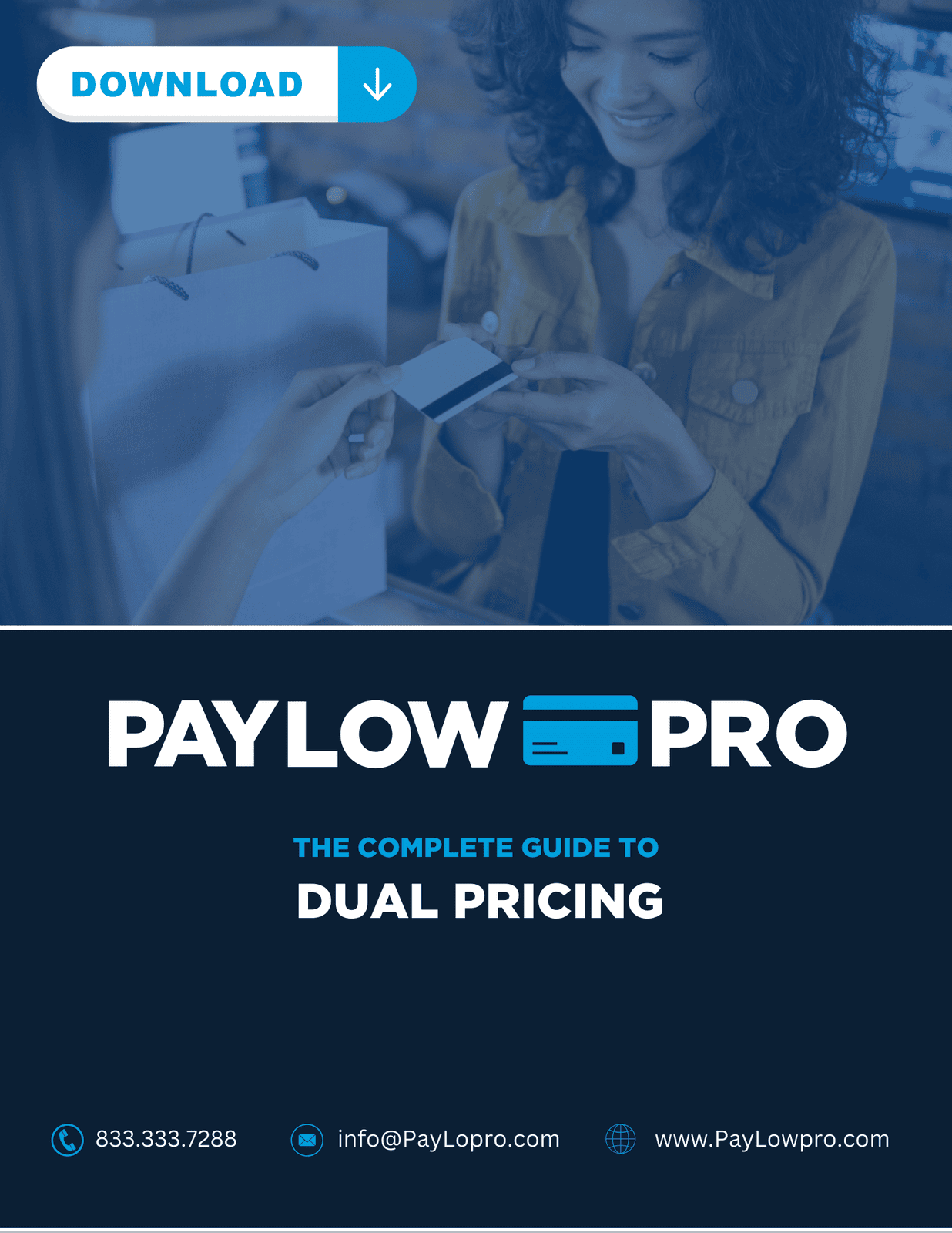
Eliminate processing fees at every location while keeping operations simple and legally sound.
As payment processing fees continue to rise, many businesses are turning to dual pricing as a way to protect their margins without increasing prices across the board. For multi-location businesses, however, adopting a dual pricing model isn’t as simple as flipping a switch. Differences in state regulations, customer expectations, technology limitations, and internal training requirements make consistency a challenge — but one that can be overcome with the right approach.
Dual pricing works by presenting two prices to the customer: one for paying with cash, and one for paying with a card. Unlike traditional surcharge models, dual pricing is legal in all 50 states when implemented properly. It’s a transparent, compliant way for businesses to recover processing costs while giving customers a choice in how they want to pay. That said, applying this model across multiple locations — especially in different cities or states — requires careful planning and execution to remain compliant and customer-friendly.
1. Varying State Regulations Require Location-Specific Compliance
One of the most significant challenges for multi-location businesses is navigating the differences in local regulations. While dual pricing is legal nationwide, states and municipalities may have specific requirements for how prices are disclosed, how signage is displayed, and how receipts are formatted. For example, a store operating in New York may need to use prominent signage that clearly states both prices, whereas another location in Texas might follow different display requirements. Ensuring compliance at each location means working with a payment partner that understands these nuances and can provide customized solutions, including signage, terminal setup, and receipt configuration tailored to local rules.
2. Staff Training Must Be Consistent Across All Locations
Staff training is another critical element in rolling out dual pricing successfully. Without clear and consistent messaging, employees may confuse customers or misrepresent the pricing model, leading to unnecessary friction at the point of sale. Businesses need to invest in standardized training across all locations, teaching staff how to explain dual pricing in simple, customer-friendly terms. For instance, employees should be coached to say, “We offer a discount for cash payments,” rather than framing card prices as a fee or penalty. Supplementing training with printed FAQ cards or quick explainer videos can help ensure consistency, regardless of who is working the register.
3. Technology Needs to Support Dual Pricing at Scale
Technology can also pose a barrier, especially for businesses using different point-of-sale (POS) systems at various locations. Not all POS systems are built to handle dual pricing natively. Some systems may require manual workarounds, while others lack the ability to display and print two prices altogether. To scale effectively, multi-location businesses should use payment technology that is purpose-built for dual pricing — including card readers, mobile terminals, and software gateways that automatically display both prices, print compliant receipts, and record payment methods for accurate reporting. PayLow Pro, for example, offers turnkey dual pricing solutions that are pre-configured and easy to deploy across a growing enterprise.
4. Reporting and Reconciliation Get More Complex with Growth
Another often-overlooked aspect of scaling dual pricing is reporting and reconciliation. Businesses with multiple locations need to be able to track sales by payment method, monitor processing fee offsets, and reconcile deposits by branch — all while keeping their accounting accurate and audit-ready. A centralized dashboard that pulls in data from each location is essential for making informed decisions. Business owners should look for systems that allow them to view sales trends by location, distinguish between cash and card revenue, and generate tax-ready reports with minimal effort.
5. Consumer Perception Varies by Region and Demographics
Lastly, it's important to consider customer perception across different regions. What might be well received in one community may cause confusion in another. For example, customers in urban markets may be more accustomed to digital transactions and less familiar with dual pricing, while shoppers in smaller towns may already be used to seeing cash discounts. Businesses can localize their messaging to match the expectations and communication styles of each audience. In all cases, transparency is key — signage and staff explanations should clearly show that the card price includes the cost of processing, while the cash price offers a built-in discount.
Final Thoughts: Build a Dual Pricing Program That Scales
Successfully implementing dual pricing across multiple locations isn’t just possible — it can become a competitive advantage when done right. The key is to establish a clear rollout strategy that accounts for legal compliance, staff education, customer communication, and backend reporting. With the right tools and support, dual pricing can be an effective, scalable solution for eliminating processing fees while enhancing price transparency and customer trust.
At PayLow Pro, we specialize in helping multi-location businesses navigate these complexities. From tailored onboarding and training to plug-and-play technology and real-time reporting dashboards, our solutions are built for scale. If you're ready to eliminate fees and streamline operations across every branch, contact us today to learn how PayLow Pro can support your growth.
Get the Guide
- The hidden fees your practice incurs for card payments
- The differences between traditional processing, cash discounts, surcharging, and dual pricing
- The legalities for federal government, state legislation and card brand regulations
- The correct setup process and implementation of a legal dual price processing program.






